29 kesä UltraLIM – Ultra low-impact exploration methods in the subarctic
Name: Ultra-low impact exploration methods in the subarctic
Acronym: UltraLIM
Duration: 2013-2015
Total costs (€)/Tekes support:
Leading research organization partner: Geological Survey of Finland
Contact persons: Maarit Middleton, Geological Survey of Finland, maarit.middleton(at)gtk.fi; Pertti Sarala, Geological Survey of Finland, pertti.sarala(at)gtk.fi
www: www.gtk.fi
Research organization partners: University of Oulu
Company partners: FQM FinnEx Oy, Dragon Mining Oy, Agnico-Eagle Oy, AA Sakatti Mining Oy, Metsähallitus, Ab Scandinavian GeoPool Ltd.
International partners: Geological Survey of Canada (Canada), Heberlein Geoconsulting (Canada), Colin Dunn Consulting (Canada)
Number of reviewed publications, incl. submitted manuscripts: 2
Number of other publications and reports: 1
Number of thesis: Master 2
Need and motivation of the project:
Targeting bedrock drillings in an exploration project of mineral resources is commonly based on geological observations of bedrock outcrops, interpretation of geophysical anomalies and geochemistry of glacial sediments. In the recent years, exploration companies have faced an increasing demand for applying techniques which should be effective also on poorly exposed terrains and detecting deeply seated mineralizations. Simultaneously they should also be applicable for pinpointing drilling targets in environmentally sensitive regions. Concurrently, several new geochemical sampling techniques and analytical applications have been developed abroad and successfully applied in commercial setting world-wide. These techniques use mineral and organic soils, vegetation and snow as a sampling medium and rely on transportation of ions and hydrocarbon compounds from the mineralized zone to the surface soil and at the base of the snow pack. The advantages of the tested sampling procedures are: fast sampling, can be done on foot or on snow mobile, and the tracks left the nature are insignificant.
Main set targets:
The objectives of the UltraLIM project were to create practical guidelines for sampling of soils, plants and snow, their analytical methods and data analysis for target scale mineral exploration, and to gain confidence in the analysis of the datasets in order to apply them for prospecting of blind mineralizations in the future. The goals were reached by conducting an orientation survey on six well studied mineralizations.
Key results
The primary outcome of the UltraLIM project was that, besides subcropping mineralizations, also deeply buried mineralizations (< 200 m depth under bedrock surface) could be detected with soil, bio and snow geochemistry. The soil weak and selective leaches of mineral and organic horizons turned out to be very sensitive to underlying mineralized zones and lithogeochemical variability. Thus care should be taken to avoid false anomalies which might create unnecessary drilling targets. The tests conducted on peatlands showed that further work is needed to normalize the selective leach responses to the bulk composition variations of peat. Significant ores and deposits could be detected with plants but the biogeochemical response of sporadic mineral occurrences was weak and non-repeatable in two consequent years. Lithogeochemical contrast is needed for the plant chemistry anomalies to occur. The risk of not detecting minor mineralization has to be accepted when working with biogeochemical data. The soil gas hydrocarbon analysis of snow revealed the location of half of the known mineralization. However, the repeatability of the anomaly patterns in the following year’s sampling campaign was rather poor. The elemental analysis using SC-HR-ICP-MS for filtered snow samples returned some promising results and can be considered as a potential method for exploration purposes after the analysis procedure has been developed further. The detailed sampling instructions applicable to northern conditions are presented in the final report of the project (Middleton et al. 2016).
Commercialization measures and/or potential
Currently analytical services of weak and selective leaches, biogeochemistry and snow are easily available for exploration companies because several commercial international laboratories providing these analytical services have offices in Finland. However, geochemical sampling and data analysis consulting business is global. The specialized nature of the work requiring basic knowledge of soil and plant geochemistry supports the idea of having consultants conducting the geochemical work. In order to create Finnish geochemical consulting business the locally operating exploration companies first have to adopt these geochemical exploration techniques into their exploration strategies.
List of publications
Middleton, M., Sarala, P., Taivalkoski, A., Torppa, J., Kyllönen, E., Lahaye, Y., Lukkari, S., Peuraniemi, V., Pietikäinen, K, Rekilä, J., Rönnqvist, J., and Sutinen, R., 2016. Ultra low-impact geochemical exploration methods in the sub-arctic. Report of Investigations, Geological Survey of Finland. Available at http://hakku.gtk.fi/ in the fall 2016.
Taivalkoski, A., Sarala, P., Lahaye, Y., Lukkari, S. and Sutherland, D., 2016. Snow in mineral exploration – examples and practices in glaciated terrain. Submitted article manuscript.
Sutinen, R., Torppa, J., and Middleton, M., 2016. Biogeochemical signals of the Juomasuo Au-Co-Cu ore. Submitted article manuscript.
Kyllönen, E., 2015. Maaperän heikkouuttomenetelmien käyttö malminetsinnässä Kittilän Hakokodanmaalla ja Soklin Kyörtesselässä Pohjois-Suomessa. Oulun yliopisto, 116 p, 2 attachments. Available at http://herkules.oulu.fi/thesis/nbnfioulu-201506061818.pdf
Rekilä, J., 2015. Heikkouuttomenetelmien käyttö malminetsinnässä Kuusamo Juomasuolla Koillismaalla. Oulun yliopisto, 76 p, 16 attachments. Available at http://tupa.gtk.fi/opinnayte/rekila_janne_gradu.pdf


